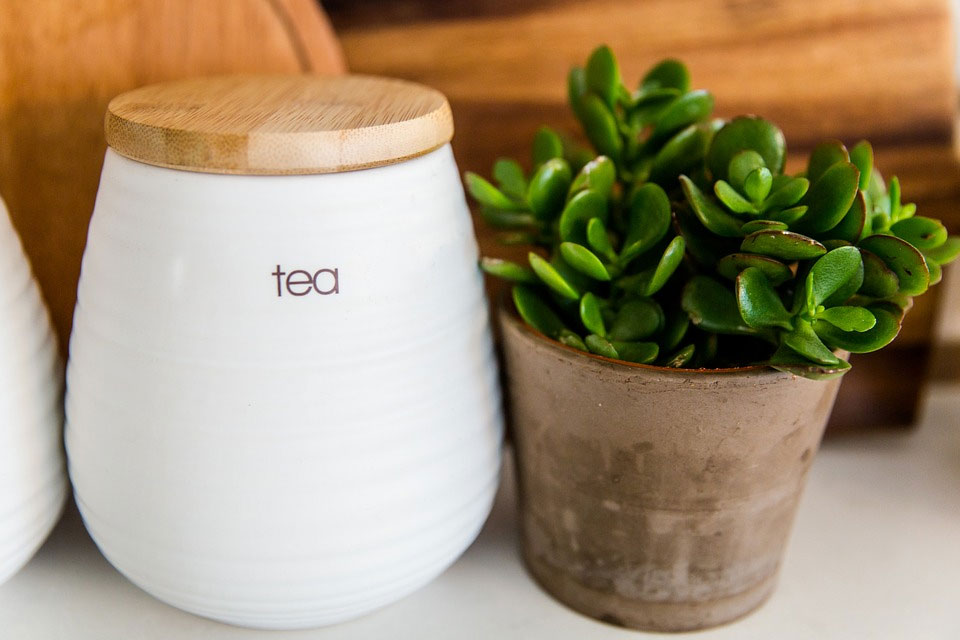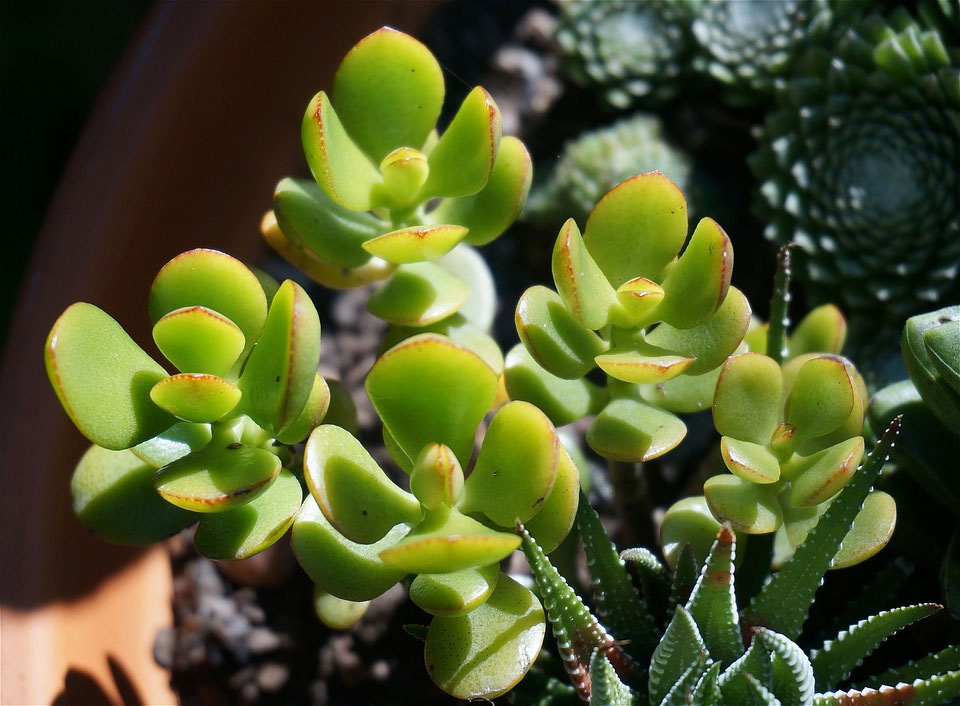Jade Plant Propagation – How to Plant and Care for Jade Plants
Plant lovers everywhere have a soft spot for the jade plant. It’s one of those succulent houseplants that blend with the surroundings and brings in a jovial atmosphere whatever the setting.
The jade plant is the go-to housewarming gift since the jade plant is considered a symbol of luck. It’s no wonder then that it goes by other names such as the “lucky plant”, “dollar plant”, “friendship plant”, and “money plant.” It seems that prosperity and the jade plant go hand in hand.
While it’s easy to grow the jade plant, caring for and propagating the plant is not as easy or straightforward as it might seem. At least not for a plant that you intend to grow to boost your fortunes or maybe help you win the lottery. So let’s dive right in and see what it takes to grow a jade plant in your house.
What’s the Jade Plant?
The jade plant or Crassula ovata is it’s known in botanical circles is a short plant with meaty leaves that radiate a dark green hue unlike the green of banknotes. The stubby leaves look like droplets of water when young and like spoons when fully grown. With this peculiar shape and green shades, it’s easy to see why it has been associated with financial success.
As a native of South Africa and Mozambique, the jade plant made its way into homes all over the globe. With the right amount of pruning, you can turn this compact plant into bonsai. Left to its own devices, the fully grown jade plant will become a full-blown bush that reaches 6 feet. But with pruning, you can keep it growing at 3 feet.
A member of the Crassulaceae family, the thick and woody stem along with the bushy top gives it the appearance of a tree. So if you’re keen about having bonsai in your home without all the long hours of caring and pruning, the jade plant in its miniature form is the right one for you.
Varieties of Jade Plant
The spoon-shaped leaves of the jade plant make it famous among all plants. But that’s just one species of a large family that has over 1,400 species. Granted not all these species are good for your home, and some would even cost you an arm and a leg since they’re quite rare. However, the following species will dazzle you with their beauty and landscaping qualities.
- Hummel’s Sunset: a simple and no-frills jade plant distinguished with yellowish leaves with red tips and symmetrical shapes. Also known as Sunset, it’s quite popular in many homes thanks to its hardy nature and minimum maintenance requirements. You can grow it in the garden or indoor.
- Blue Bird: Forget about the spoon-shaped leaves. The Blue Bird dazzles with its bluish twisted leaves with a reddish outline. It also comes in a purple variety that shines in any landscape. Without pruning, it will spread wide and claim a wide area in your home.
- Red Pogoda: The name doesn’t do this unique species justice. Its small branches spread out in a circle and the condensed leaves fan out to give it an otherworldly appearance. Add a touch of magic to your interior design with this gorgeous plant.
- Crassula Campfire: This time the name describes it well. The red and orange leaves of this plant resemble flames. In the right light, it does look like a campfire. But that’s not all. It has a white bloom that blossoms in the summer and adds to its beauty.
- Monstruosa Hobbit: If you’re a fan of the Tolkein world, then this plant with its curled leaves and a red tip fits right in with your interior design themed around the Lord Of The Ring world and its dark characters.
- Ripple Leaf: Nothing adds cheer and brightens a room like this flowery hybrid. It has thinner leaves than the average jade plant and it does well in both direct sunlight and shade. But the delicate pinkish flowers are a delight in every setting.
How to Plant Jade Plants
As popular as they are, not many people know how to plant a successful jade plant and watch it grow and bring good karma into the house. So how would you go about planting it?
The following easy steps guide you through this process.
- Start with the pot as usual. This needs to be a deep pot that can handle the weight of a miniature tree. Either clay or plastic pots will do. Make sure the pot has draining holes at the bottom.
- Fill the pot with a mixture of potting soil. It should be loose and well-drained. Too much moisture affects the roots, encourages fungal infestations, and slows the growth of the plant. Add one-third portion of perlite to improve drainage and soil aeration.
- Make a cutting, either a leaf or a stem. It should be about 3 inches long with two leaves attached. Leave it in a warm area for a few days.
- Place the leaf horizontally on top of the pot and cover the cut end with soil. If it’s a stem, then plant it upright in the pot. You might need to support it with a few pebbles to keep it upright.
- Don’t water the pot just yet.
- Keep the potted plant in a warm place that gets enough indirect sunlight.
- Within two weeks, the new plant will grow roots that reach deep into the soil. Give the plant a gentle tug to see if its roots are established.
- Now water the plant. Don’t aim directly at the roots. Make sure the excess water comes out of the drainage holes at the bottom of the pot.
- Wait for the topsoil to go dry before you water it again. Always be wary of disturbing the roots. Keep the pot away from direct sunlight.
Jade Plant Care
It’s not easy to water the jade plant without making the topsoil wet. But with practice, you’ll get the bottom soil wet to encourage the roots to reach down. So how do you care about your jade plant?
Apart from pruning, you’ll also need to give it fertilizer, watch for diseases and pests, and make sure it is growing successfully.
Temperature
Dry weather is the key to the success of your money plant. Ideally, you should keep the temperature somewhere between 65 and 75 degrees F.
Cold temperatures combined with high humidity can make the plant literally sick. The leaves turn yellow and the woody stem becomes soft and mushy. That said, this is a hardy plant that can handle a cold or chilly night as long as the next day brings a hot sun.
Light
Succulents as a rule love the light but don’t need direct sunlight. The same applies to the jade plant. You can grow it indoors or outdoors, as long as it doesn’t have the glare of the sun hit it directly.
The best place for the jade plant pot is in a window that gets some sunlight a few hours every day. You can also keep it in partial shade without impacting its growth or flowering.
Watering
We saw how watering the jade plant cutting can be tricky. You need to keep the young roots undisturbed while you water the pot without getting the topsoil wet.
Since succulents survive bouts of drought by storing water in their thick and meaty leaves, you need to be careful about overwatering. Too much water would kill the plant. The rule of thumb is if the top two inches of the soil are completely dry, then you need to water it.
Pests and Diseases
As a household plant, you need to pay extra attention to the types of diseases and pests that the jade plant attracts. One of the most common issues with this succulent is the yellow leaves problem.
It’s caused by inadequate watering. Either too much or too little water make the sensitive leaves turn yellow. Follow the guidance in the previous section to water the plant just when it needs irrigation.
Black and white mold is another issue. As with most fungal infestations, this one is caused by high levels of humidity in the air. Wipe the mold off the leaves and make sure the room gets plenty of ventilation. While mold usually appears on the soil and is the result of overwatering. Let the topsoil go dry before you water the plant again.
As for pests, the most common bug that attacks the jade plant is the mealybug. Treat them with a chemical pesticide if you have a huge infestation. For mild cases, use neem oil which poses less risk on pets and children in the household.
Jade Plant Propagation and Repotting
Either the stems or leaves of the jade plant are good candidates to propagate it. Even the leaves that look mushy out of overwatering can be used to grow a new plant. Just remove the mushy part and keep the leaf in a warm place where the callus covers the cut and prevents rotting.
You will also need to repot the plant every so often. You need to be careful when transferring the plant to a larger pot. Make sure to move the plant along with the whole root system in the same soil it grew in. Don’t try to extract the rootball out of the soil since that could kill the plant.
In general, you should wait for the jade plant to outgrow its current pot before you think of repotting it. As we saw, the repotting process is delicate and you need to have a larger pot that can take the whole plant with its soil along with new and fresh soil added on top.
Remove any dark roots from the rootball and keep the healthy white roots. Some horticulturalists recommend adding a layer of gravel at the bottom of the new pot to improve drainage. Add fresh soil over the layer of the gravel before you drop the plant into the new pot.


